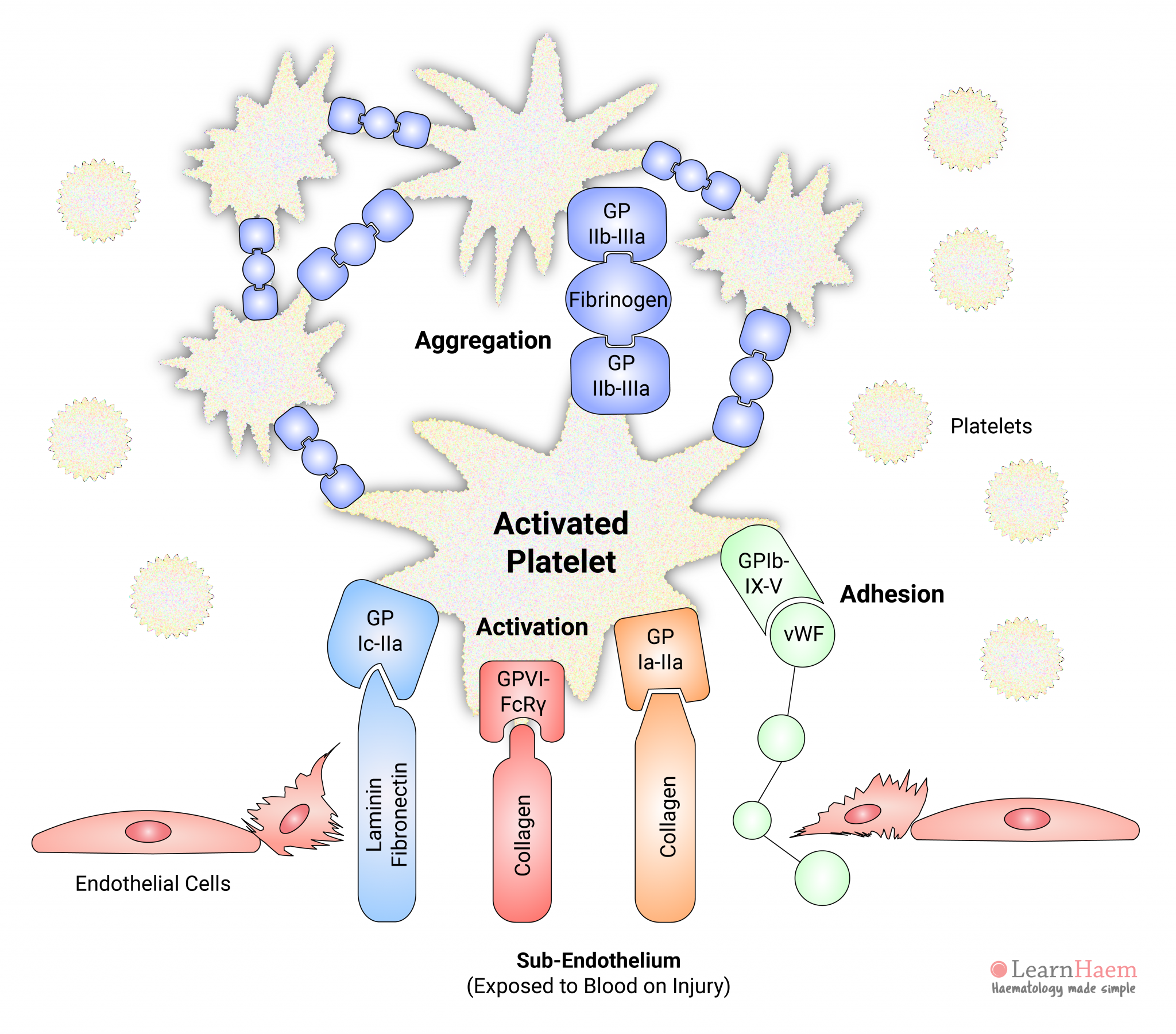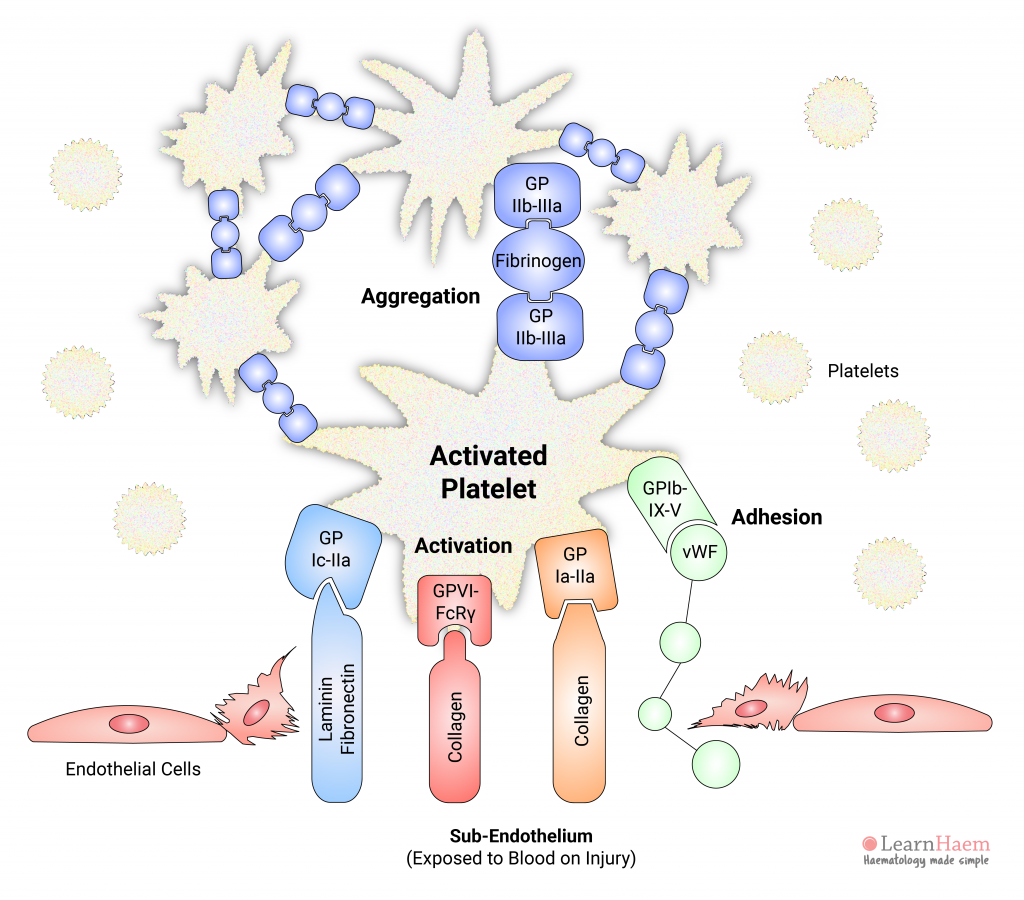Platelets are blood cells responsible for primary haemostasis. They are derived from megakaryocytes in the bone marrow. Platelets contain alpha and dense granules which contain a variety of haemostatic proteins. They express a number of receptors which are essential to platelet function.
- Adhesion: this occurs when an injury to the endothelial layer exposes von Willebrand factor (vWF) in the sub-endothelial layer. vWF binds to GPIb-IX-V on platelets, anchoring platelets to the site of injury.
- Activation: platelets are activated by a variety of agonists binding to their corresponding receptors. Some examples are shown here: collagen binds to GPVI. Activation triggers a rapid reorganisation of its cytoskeleton, resulting in a change in shape. Pseudopods extend from the platelet membrane, dramatically increasing the surface area upon which coagulation, aggregation and adhesion can occur.
- Aggregation: a platelet plug is an aggregate of a large number of platelets, stabilised by a fibrin mesh. Fibrin is the end-product of the activation of coagulation proteins in the blood (described later). It binds to GPIIb-IIIa expressed on platelet surfaces.



Leave A Comment